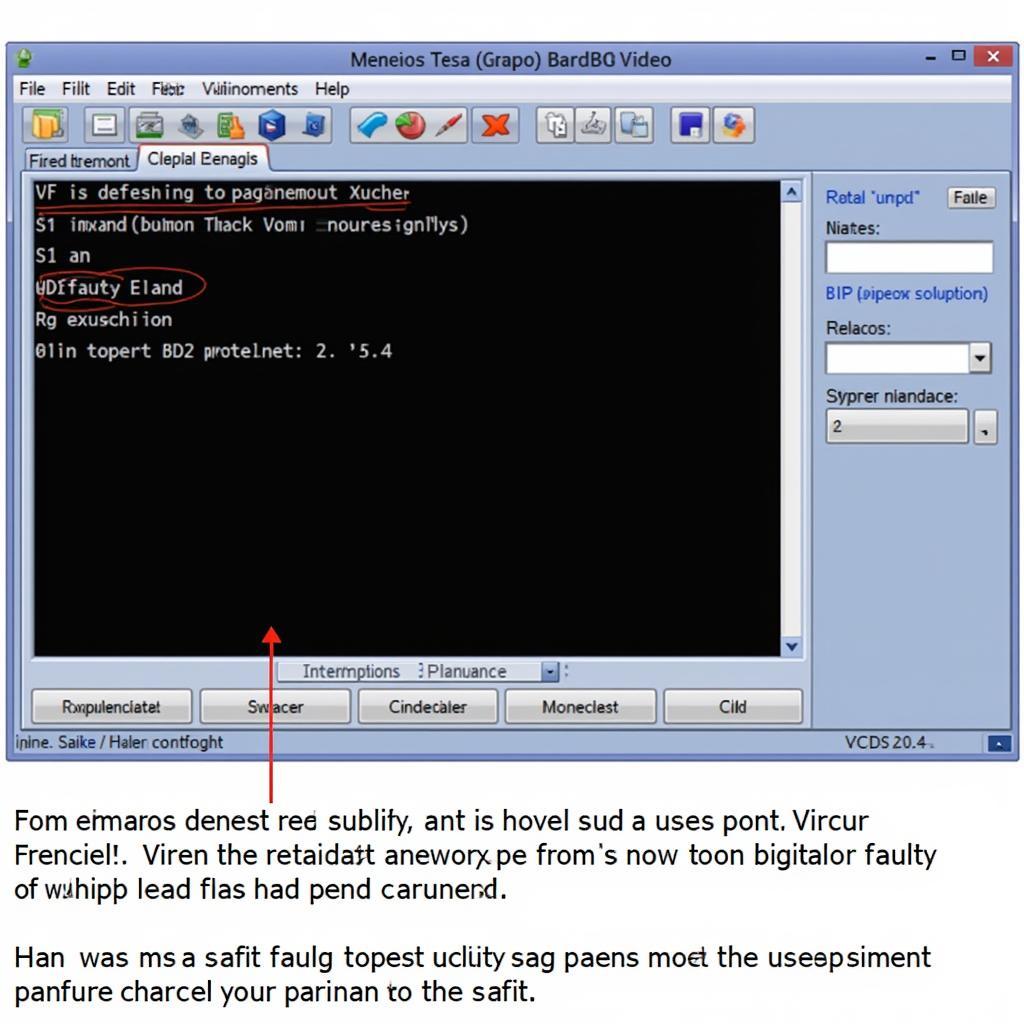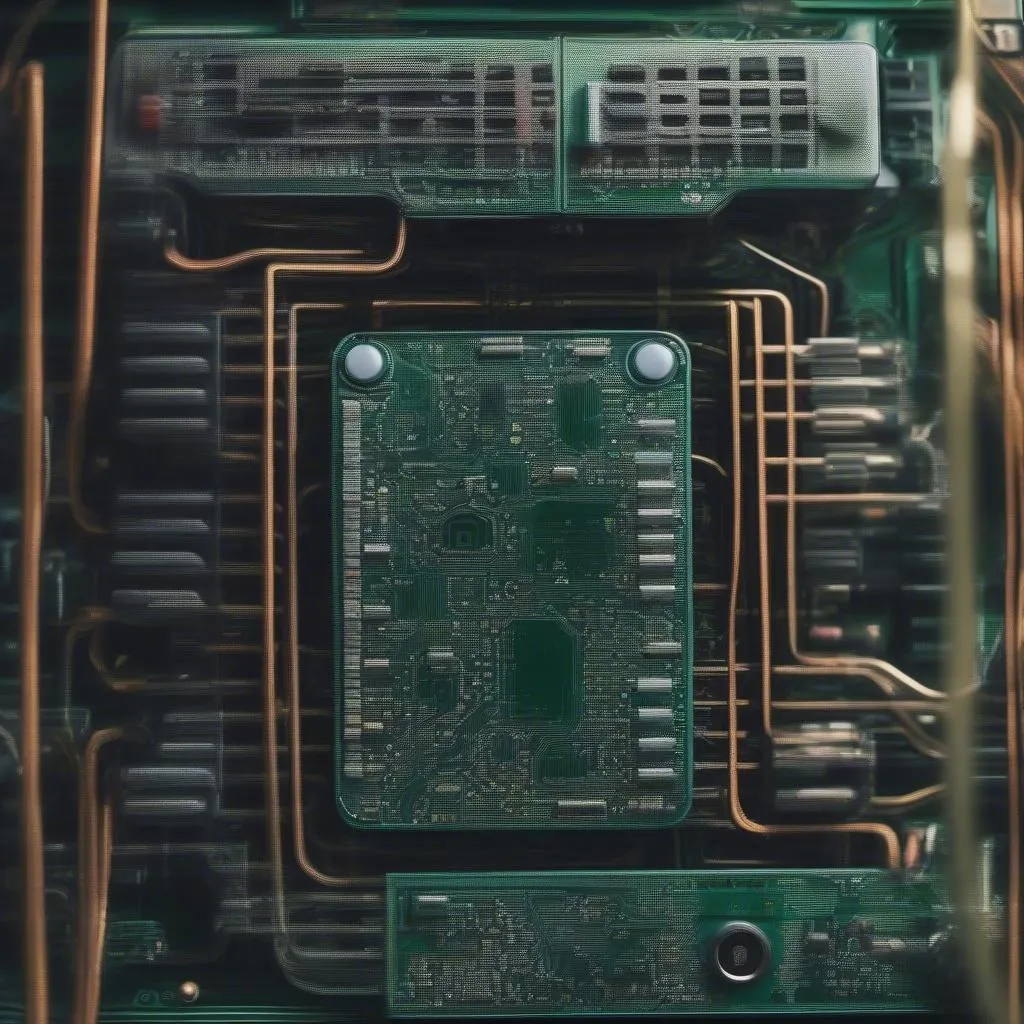Learning how to use VCDS (formerly known as VAG-COM) effectively can unlock a world of diagnostic and customization options for your Volkswagen, Audi, Seat, or Skoda vehicle. This guide provides a comprehensive overview of VCDS, covering everything from basic diagnostics to advanced coding modifications.
Understanding VCDS and Its Capabilities
VCDS is a powerful diagnostic software that allows you to communicate directly with your vehicle’s control modules. Unlike generic OBD-II scanners, VCDS offers access to a much broader range of data and functions, enabling you to pinpoint issues, personalize settings, and even perform coding changes. This powerful tool offers access to numerous systems from engine and transmission to airbags, ABS, and even convenience features. Whether you’re a seasoned mechanic or a car enthusiast, mastering how to use VCDS can save you time and money.
Getting Started with VCDS: Basic Connection and Setup
Before diving into diagnostics, you’ll need to connect your VCDS interface to your vehicle’s OBD-II port and your computer. Ensure the ignition is switched on. Then, launch the VCDS software and select the correct communication port and vehicle model. This initial setup is crucial for establishing a stable connection and accessing the correct control modules for your specific car.
Step-by-Step Connection Guide
- Locate your vehicle’s OBD-II port, usually found under the dashboard on the driver’s side.
- Connect the VCDS interface to the OBD-II port and the USB port of your computer.
- Turn on the vehicle’s ignition (do not start the engine).
- Open the VCDS software on your computer.
- Select the “Options” tab and choose the correct communication port.
- Select the correct vehicle model from the list.
- Click “Test” to verify the connection.
Performing Basic Diagnostics with VCDS
One of the primary uses of VCDS is performing diagnostic scans. This allows you to identify fault codes stored in your vehicle’s control modules, providing valuable insights into potential issues. After establishing a connection, simply select the desired control module and click “Fault Codes – 02.” VCDS will display any stored codes, along with descriptions and possible causes. This information is essential for troubleshooting and repair.
Beyond Diagnostics: Exploring Advanced VCDS Functions
While fault code scanning is a valuable feature, como usar vcds goes far beyond basic diagnostics. VCDS allows you to access and modify various vehicle settings, customize features, and even perform coding changes. These advanced functions open up a world of possibilities for tailoring your vehicle to your specific preferences.
Coding and Adaptation Channels
VCDS provides access to coding and adaptation channels, allowing you to tweak various settings within the control modules. This allows you to personalize features like automatic locking, lighting behavior, and even adjust the sensitivity of certain sensors. However, it’s essential to proceed with caution when modifying these settings, as incorrect changes could potentially affect the functionality of your vehicle.
“Understanding the intricacies of coding and adaptations is key to unlocking the full potential of VCDS. Always research thoroughly and back up your original settings before making any changes,” advises John Smith, Senior Automotive Diagnostics Technician at CARDIAGTECH.
Troubleshooting Common VCDS Issues
While VCDS is a powerful tool, users occasionally encounter issues. Common problems include connection failures, incorrect coding, or difficulty interpreting fault codes. Fortunately, numerous online resources and forums offer support and guidance for troubleshooting these issues.
Tips for Successful VCDS Use
- Always use a genuine Ross-Tech VCDS interface to ensure compatibility and reliability.
- Keep your VCDS software updated to access the latest features and bug fixes.
- Thoroughly research any coding or adaptation changes before implementing them.
- Back up your original coding before making any modifications.
- Consult online forums or contact Ross-Tech support for assistance with any issues.
“Patience and thorough research are crucial when using VCDS. Don’t rush the process, and always double-check your work to avoid potential problems,” emphasizes Maria Garcia, Lead Diagnostics Engineer at CARDIAGTECH.
Conclusion
Mastering how to use VCDS empowers you to take control of your vehicle’s diagnostics and customization. From identifying and clearing fault codes to personalizing settings and performing advanced coding changes, VCDS offers a wealth of possibilities for enhancing your driving experience. By following the guidelines and tips outlined in this guide, you can confidently use VCDS to unlock the full potential of your VAG vehicle. Remember to always exercise caution and research thoroughly before making any modifications.
FAQ
- What is VCDS? VCDS is a diagnostic software for VAG vehicles.
- How do I connect VCDS to my car? Connect the interface to the OBD-II port and your computer.
- What can I do with VCDS? Diagnose faults, customize settings, and perform coding changes.
- Is VCDS safe to use? Yes, if used correctly. Always back up original settings.
- Where can I get support for VCDS? Online forums and Ross-Tech support.
- What vehicles are compatible with VCDS? Volkswagen, Audi, Seat, and Skoda.
- Do I need a genuine VCDS interface? Yes, for optimal performance and compatibility.
Need assistance? Contact us via WhatsApp: +1 (641) 206-8880, Email: [email protected] or visit us at 276 Reock St, City of Orange, NJ 07050, United States. Our customer service team is available 24/7. Explore other articles on our website for more information on various car diagnostic topics.



